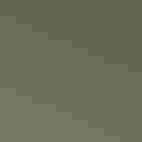MacGillivray’s Warbler
At a Glance
A skulker in dense western brush, sometimes hard to see but readily located by its hurried song and its hard chip callnote. A close relative of the Mourning Warbler of the East, replacing it from the Rockies westward. Unlike the Mourning, this species is often seen in substantial numbers during migration -- especially in early fall, when practically every thicket in the Southwest seems to have one (but only one) MacGillivray's Warbler.
All bird guide text and rangemaps adapted from Lives of North American Birds by Kenn Kaufman© 1996, used by permission of Houghton Mifflin Harcourt Publishing Company. All rights reserved.
Category
Perching Birds, Wood Warblers
IUCN Status
Least Concern
Habitat
Arroyos and Canyons, Desert and Arid Habitats, Forests and Woodlands, Shrublands, Savannas, and Thickets
Region
Alaska and The North, California, Northwest, Plains, Rocky Mountains, Southwest, Texas, Western Canada
Behavior
Direct Flight, Flitter
Population
11.000.000
Range & Identification
Migration & Range Maps
Probably migrates mostly at night. Migration is spread over a lengthy period in both spring and fall.
Description
4 3/4-5 1/2" (12-14 cm). Olive above, yellow below, with full gray hood. Sharp white crescents above and below eye, best distinction from Mourning Warbler and Connecticut Warbler. Lower throat blackish on adult males, gray on females; chin and throat whitish gray on young birds.
Size
About the size of a Sparrow
Color
Black, Gray, Green, Yellow
Wing Shape
Rounded
Tail Shape
Rounded, Square-tipped
Songs and Calls
Song a chanting tree tree tree tree sweet sweet! Call a loud tik, sharper than the calls of most other western warblers.
Call Pattern
Flat, Undulating
Call Type
Buzz, Chirp/Chip, Whistle
Habitat
Low dense undergrowth; shady thickets. Breeds in thickets of willow and alder, near stream bottoms or at edge of coniferous or mixed forest. Favors new growth in logged or burned areas (especially with dead and fallen trees), brushy thickets near low moist ground, and thicketed mountain canyons. In winter in the tropics, occurs in forest undergrowth in foothills and mountains.
Sign up for Audubon's newsletter to learn more about birds like the MacGillivray's Warbler
Behavior
Eggs
Usually 4, sometimes 3-5, rarely 6. Creamy white with brown spots, speckles or blotches. Incubation is by female alone, about 11-13 days. Apparently cowbirds do not commonly parasitize this warbler's nests.
Young
Both parents feed the nestlings. Young leave the nest about 8-9 days after hatching.
Feeding Behavior
Forages mostly close to ground in dense thickets, seeking insects on branches and among foliage. Hops when searching for insects on the ground. On the wintering grounds, individuals defend feeding territories and usually forage alone.
Diet
Mostly insects. Details of diet are not well known, undoubtedly feeds mostly on insects. Known to eat click beetles, dung beetles, alfalfa weevils, flea beetles, caterpillars, and other insects. Young birds in Colorado will take sap from borings in willows drilled by sapsuckers.
Nesting
Male sings frequently through breeding season to defend nesting territory. Nest site is well hidden in dense shrubs, often placed in upright fork of fir saplings, scrub oaks, alders, salal, chokecherry or Spiraea. Usually 2-3' above the ground, sometimes lower or as high as 5' up. Frequently in shady damp places or amid tall weeds and ferns. Nest is loosely constructed open cup made of weed stems, bark shreds, and dry grass; lined with fine grasses, rootlets, and hair. Both sexes probably help build nest.
Conservation
Conservation Status
Still common in its range, although some surveys have suggested a slight decline in numbers.
Climate Threats Facing the MacGillivray's Warbler
Choose a temperature scenario below to see which threats will affect this species as warming increases. The same climate change-driven threats that put birds at risk will affect other wildlife and people, too.





